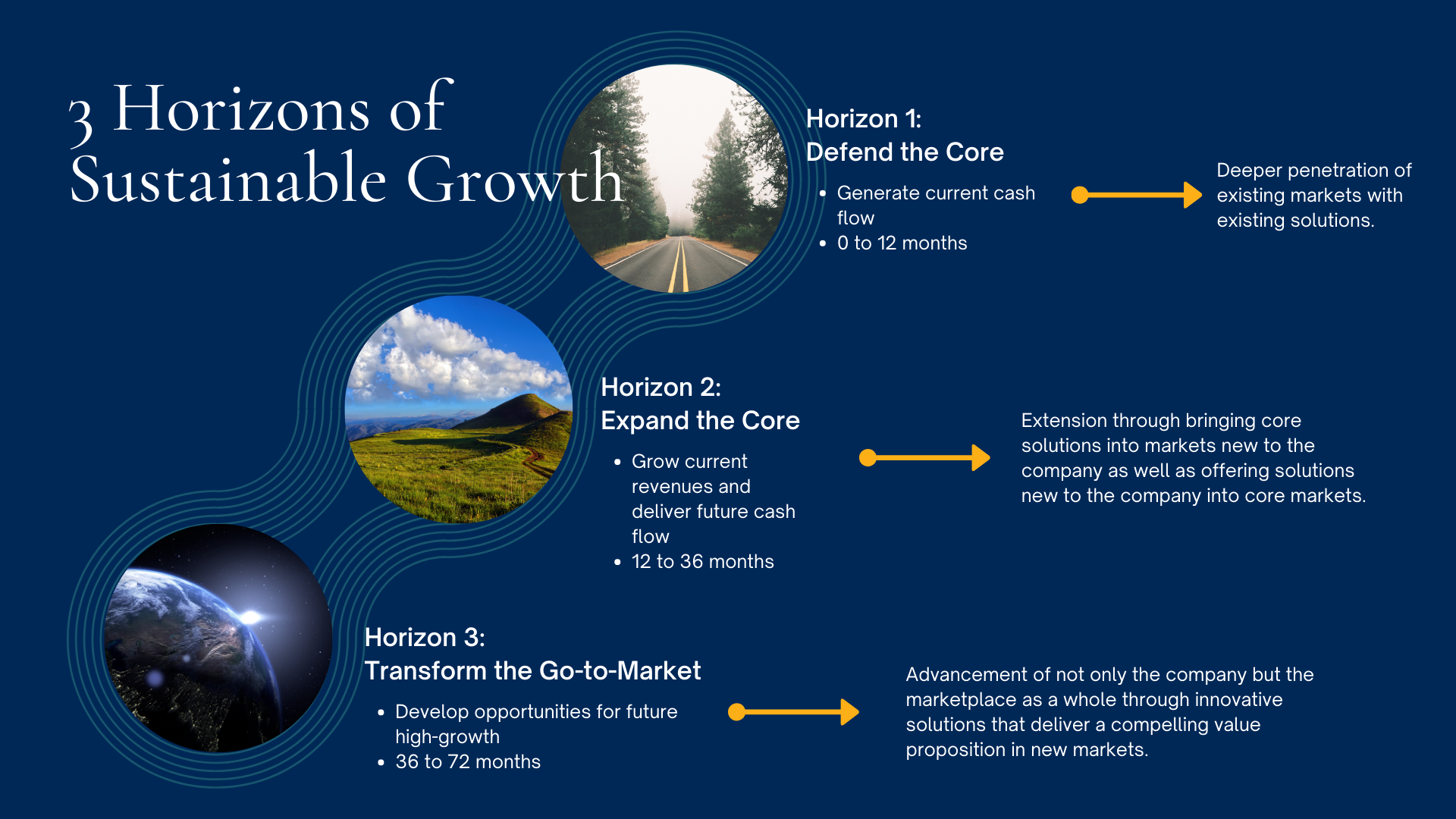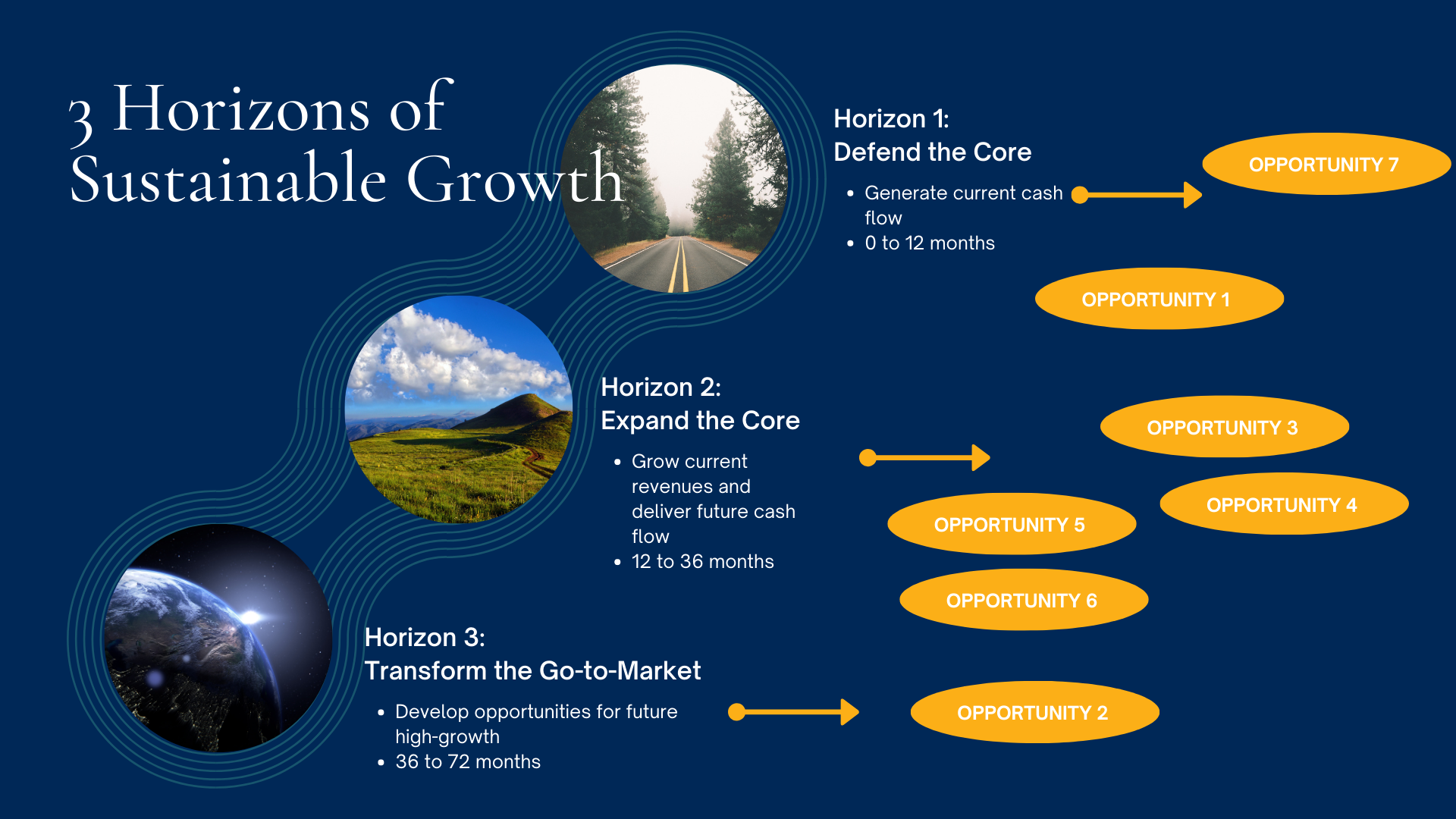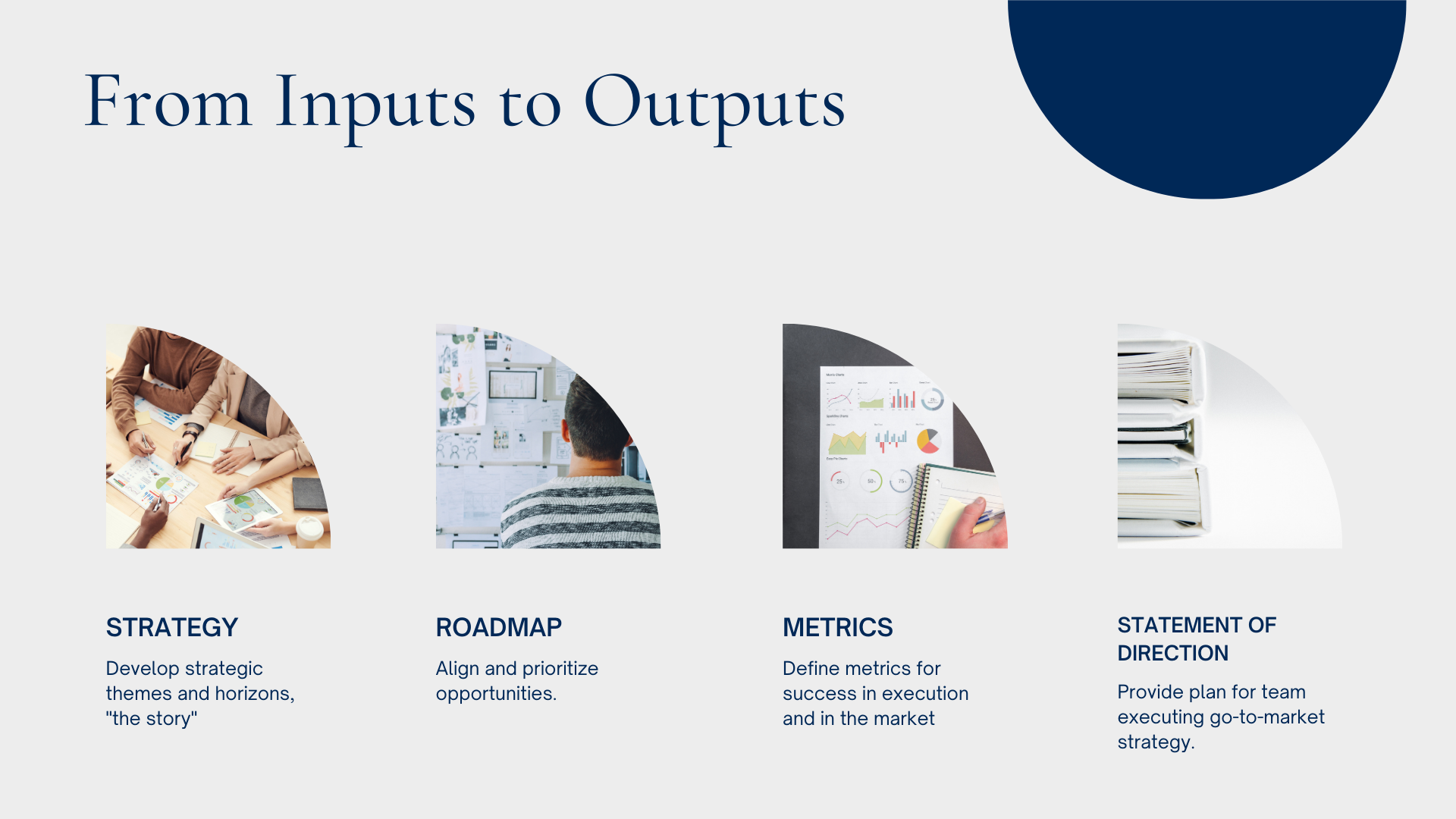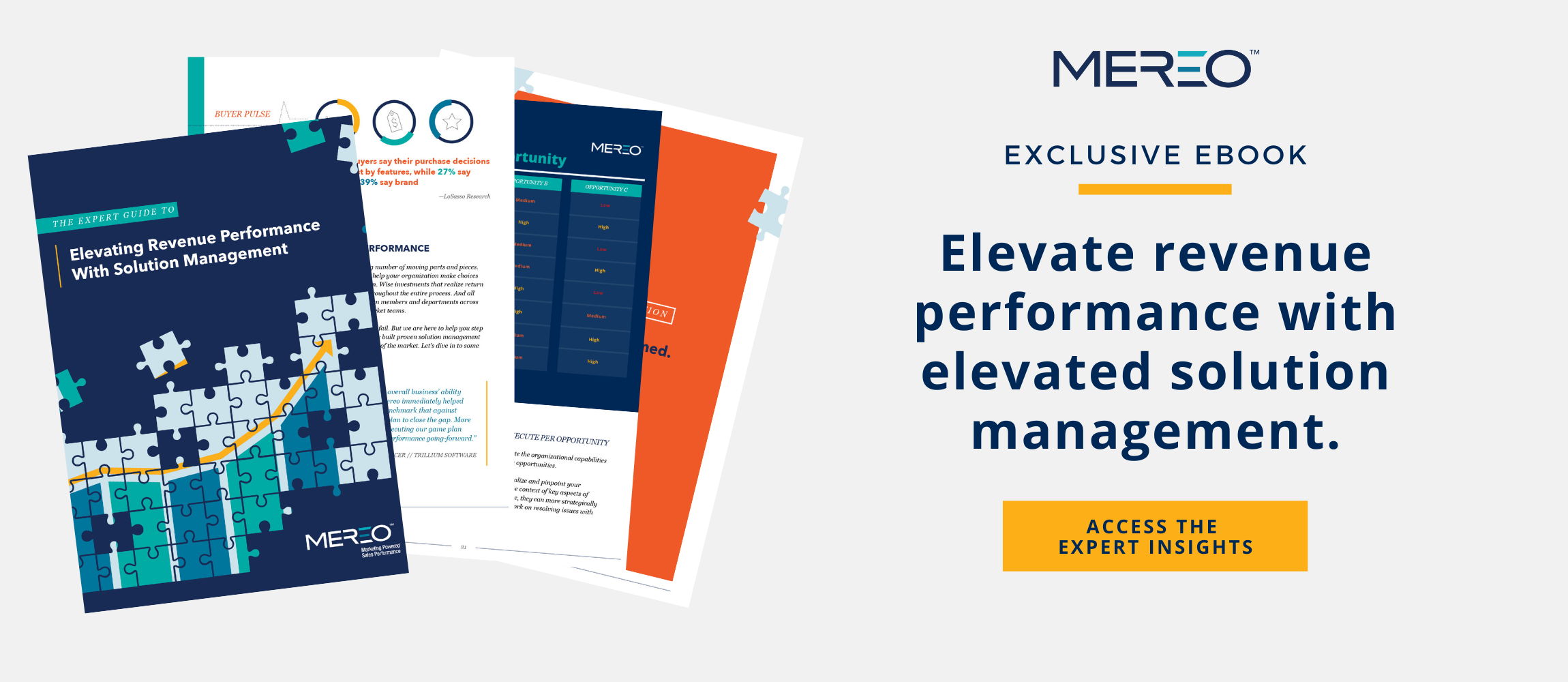In product management, your strategy does not stop at understanding effective growth options and how to gain validation for your solutions.
To achieve consensus within your business and effectively organize your resources for go-to-market success, it is also important to “paint a picture” of the future and define that future by answering questions such as:
- What are the goals and objectives over each of the next 3 to 5 years?
- How will we know we are successful?
- How will we position ourselves to win against the competition?
- How and where will we grow? Where must we prune?
- How much will this cost?
Without a shared and unified focus on where your business is headed, your organization threatens misalignment internally and externally. Employees and leadership will not know or agree on how to focus their time and efforts — and messaging. Your customers will not be able to plan effectively for how and when to employ your solutions and services. Your target profile buyers thus are confused about the misalignment they witness and experience — and may decide to engage competitive offerings.
The onus lies with your solution leadership to take out your binoculars, your telescopes, your viewfinders and determine and effectively communicate a compelling direction to point them toward. Then gaze out onto the horizon ahead and scrutinize the path before you. What is born from that far-sightedness — the aligning force that will drive your solution strategy and organizational efforts for the future to come — is the guiding beacon of a theme.
Developing Strategic Product Management Themes
While strategic product management themes sound easy — and truly are in concept and practice — B2B solution management leadership too often overlooks the value in taking this extra step.
A strategic theme presents a concrete and predictable path for industry, solution or financial analysts. It creates context for the audience — as well as confidence in your organization’s ability to deliver on its promise when you execute effectively. It should embody a sense of achievement for the groups executing on the strategy and the visible milestones along the way.
By developing strategic product management investment themes and time horizons from the onset, your leadership is able to map opportunities against a strategy and avoid falling off-course by following misaligned opportunities.
Additionally, your marketing and sales teams are better set-up to effectively prepare the market — both clients and prospects — for the new or updated offerings. With this vital preparation, your organization overall will realize increased returns on engineering and go-to-market investments.
Strategic Themes in Practice
Now that we have discussed what product management themes are and why they are important, let us explore a tangible example.
The graphic above depicts a typical approach to defining investment themes over time. In this example:
- NEXT 12 MONTHS: The first theme is to defend the core markets the company is in and to grow through further penetration of that market.
- 1-3 YEARS: The theme is to expand from that core into adjacent markets that are new. These could be new geographies, different sized companies or new industries, to name a few.
- 3-6 YEARS: The final theme is to transform the company’s solutions and innovate in a way that fundamentally changes the market itself.
Now let us apply this strategic theme approach example to a company such as Amazon and consider its recent investment strategy:
- HORIZON 1: Invest in internal infrastructure (ecommerce and distribution) to broaden and expand products offered and geographic coverage, while leveraging the U.S. Postal Service, FedEx and UPS for shipments.
- HORIZON 2: Acquire Whole Foods and invest in small warehouses to offer one-day or same-day delivery service, and enter content services through Amazon Prime Video.
- HORIZON 3: Displace alternative carriers with Amazon fleet of shippers, introduce Amazon brands into the ecommerce site, change the search engine routines to position Amazon’s own products and fundamentally challenge the entire concept of traditional retail and services.
The advantage of establishing a set of themes and horizons is that during your planning and execution discussions it enables you to map your investment opportunities against a strategy framework (a “vision” if you will) to create improved investment and market synergies.
Once the opportunities are mapped, a defined roadmap and investment plan can be established to ensure the highest probability of success and provide guardrails for effective governance.
Put another way, the process becomes:
- Consider your strategic themes and horizons.
- Utilize those to align and prioritize your opportunities into a defined roadmap.
- Define your metrics for success in execution and in the market.
- Present those in a compelling way that can be consumed by organizations that need to execute on the go-to-market plans to deliver the revenue. This “Statement of Direction” presents the target market, the market situation and issues, the goals of each horizon in context of themes, the solutions/services to be delivered, the benefits to the market (and to your company), and the investment and market availability timing.
On Your Horizon: Sustainable Revenue Performance
Mereo principals have helped hundreds of B2B companies develop effective themes and empowering roadmaps that help drive sustainable revenue performance. We bridge cross-organizational alignment gaps and bring an expert eye to solution opportunities worth investing in. Contact us to get started.
For more direction on elevating revenue performance with solution management, access the free Mereo eBook.




